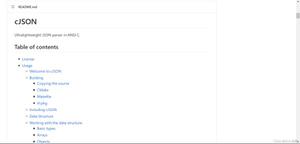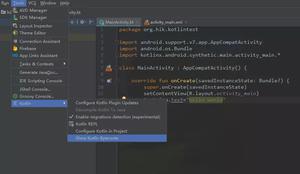使用JSON模块进行漂亮打印时,如何实现自定义缩进?
因此,我使用的是Python 2.7,使用该json模块对以下数据结构进行编码:
'layer1': { 'layer2': {
'layer3_1': [ long_list_of_stuff ],
'layer3_2': 'string'
}
}
我的问题是我正在使用漂亮的打印来打印所有内容,如下所示:
json.dumps(data_structure, indent=2)太好了,除了我要缩进的全部内容(内容除外)外,"layer3_1"这是一个庞大的字典,列出了坐标,因此,每一个上设置一个值都可以轻松打印出包含数千行的文件,并带有示例如下:
{ "layer1": {
"layer2": {
"layer3_1": [
{
"x": 1,
"y": 7
},
{
"x": 0,
"y": 4
},
{
"x": 5,
"y": 3
},
{
"x": 6,
"y": 9
}
],
"layer3_2": "string"
}
}
}
我真正想要的是类似于以下内容的东西:
{ "layer1": {
"layer2": {
"layer3_1": [{"x":1,"y":7},{"x":0,"y":4},{"x":5,"y":3},{"x":6,"y":9}],
"layer3_2": "string"
}
}
}
我听说可以扩展该json模块:是否可以将其设置为仅在"layer3_1"对象内部时关闭缩进?如果是这样,有人可以告诉我如何吗?
回答:
以下是我的原始答案的一个版本,该版本已进行了多次修订。与原始文档不同,我只发布了原始文档,以展示如何在JFSebastian的工作答案中获得第一个想法,并且与他一样,该对象返回了对象的非缩进
字符串 表示形式。最新的更新版本返回隔离格式的Python对象JSON。
每个坐标的键dict将按照OP的注释之一按排序顺序显示,但sort_keys=True前提是在json.dumps()驱动过程的初始调用中指定了关键字参数,并且在此过程中它不再将对象的类型更改为字符串。换句话说,现在保留了“包装”对象的实际类型。
我认为不了解我帖子的初衷会导致很多人对此发表不赞成的话,因此,主要是因为这个原因,我多次“修复”并改进了答案。当前版本是我原始答案的结合,还有@Erik
Allik在其答案中使用的一些想法,以及该答案下方评论中显示的其他用户的有用反馈。
以下代码似乎在Python 2.7.16和3.7.4中均保持不变。
from _ctypes import PyObj_FromPtrimport json
import re
class NoIndent(object):
""" Value wrapper. """
def __init__(self, value):
self.value = value
class MyEncoder(json.JSONEncoder):
FORMAT_SPEC = '@@{}@@'
regex = re.compile(FORMAT_SPEC.format(r'(\d+)'))
def __init__(self, **kwargs):
# Save copy of any keyword argument values needed for use here.
self.__sort_keys = kwargs.get('sort_keys', None)
super(MyEncoder, self).__init__(**kwargs)
def default(self, obj):
return (self.FORMAT_SPEC.format(id(obj)) if isinstance(obj, NoIndent)
else super(MyEncoder, self).default(obj))
def encode(self, obj):
format_spec = self.FORMAT_SPEC # Local var to expedite access.
json_repr = super(MyEncoder, self).encode(obj) # Default JSON.
# Replace any marked-up object ids in the JSON repr with the
# value returned from the json.dumps() of the corresponding
# wrapped Python object.
for match in self.regex.finditer(json_repr):
# see https://stackoverflow.com/a/15012814/355230
id = int(match.group(1))
no_indent = PyObj_FromPtr(id)
json_obj_repr = json.dumps(no_indent.value, sort_keys=self.__sort_keys)
# Replace the matched id string with json formatted representation
# of the corresponding Python object.
json_repr = json_repr.replace(
'"{}"'.format(format_spec.format(id)), json_obj_repr)
return json_repr
if __name__ == '__main__':
from string import ascii_lowercase as letters
data_structure = {
'layer1': {
'layer2': {
'layer3_1': NoIndent([{"x":1,"y":7}, {"x":0,"y":4}, {"x":5,"y":3},
{"x":6,"y":9},
{k: v for v, k in enumerate(letters)}]),
'layer3_2': 'string',
'layer3_3': NoIndent([{"x":2,"y":8,"z":3}, {"x":1,"y":5,"z":4},
{"x":6,"y":9,"z":8}]),
'layer3_4': NoIndent(list(range(20))),
}
}
}
print(json.dumps(data_structure, cls=MyEncoder, sort_keys=True, indent=2))
输出:
{ "layer1": {
"layer2": {
"layer3_1": [{"x": 1, "y": 7}, {"x": 0, "y": 4}, {"x": 5, "y": 3}, {"x": 6, "y": 9}, {"a": 0, "b": 1, "c": 2, "d": 3, "e": 4, "f": 5, "g": 6, "h": 7, "i": 8, "j": 9, "k": 10, "l": 11, "m": 12, "n": 13, "o": 14, "p": 15, "q": 16, "r": 17, "s": 18, "t": 19, "u": 20, "v": 21, "w": 22, "x": 23, "y": 24, "z": 25}],
"layer3_2": "string",
"layer3_3": [{"x": 2, "y": 8, "z": 3}, {"x": 1, "y": 5, "z": 4}, {"x": 6, "y": 9, "z": 8}],
"layer3_4": [0, 1, 2, 3, 4, 5, 6, 7, 8, 9, 10, 11, 12, 13, 14, 15, 16, 17, 18, 19]
}
}
}
以上是 使用JSON模块进行漂亮打印时,如何实现自定义缩进? 的全部内容, 来源链接: utcz.com/qa/402168.html








